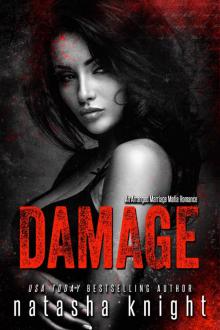House of Meetings


Author: Martin Amis
Category: Fiction
Published: 2006
Series:
View: 573
Read OnlineWith The House of Meetings, Martin Amis may finally have written the novel his critics thought would never come. By taming his signature (and polarizing) stylistic high-wire act, Amis has crafted a sober tale of love and cynicism against the grim curtain of Stalin's Russia. The book's anonymous narrator--a Red Army veteran and unapologetic war criminal--and his passive, poetic half-brother, Lev, become pinned in a politically dangerous love triangle with the exotic Zoya, though their tactics (and intentions) are as divergent as their personalities. Swept up in the wave of Stalin's paranoid purges, the brothers are sent independently to Norlag, a Siberian internment camp where their respective fates are cast through their contrasting reactions to the depravity of the prison. Zoya and Lev share a night in "The House of Meetings," a room provided for conjugal visits with the prisoners, and the events of that night reverberate through the decades, the details of the liaison remaining concealed until the story's devastating denouement.
Amis's main achievement is his depiction of the cruel realities of the Soviet gulags. Drawing heavily on his research for Koba the Dread: Laughter and the Twenty Million, his half-history/half-memoir of political imprisonment and mass killing in Soviet Russia, Amis has created his own Animal Farm--without metaphors to mask the blood, filth, and death of the camps. Amis vividly recreates the social structure of gulag life, as the inmates and guards sort themselves into distinct hierarchies and stations in their struggles to survive the rigors of the gulag. Here The House of Meetings may accomplish what Amis had intended for the unfocused Koba: to cast a searing light on an often overlooked episode of 20th century inhumanity, injustice, and murder. --Jon Foro
Amis's main achievement is his depiction of the cruel realities of the Soviet gulags. Drawing heavily on his research for Koba the Dread: Laughter and the Twenty Million, his half-history/half-memoir of political imprisonment and mass killing in Soviet Russia, Amis has created his own Animal Farm--without metaphors to mask the blood, filth, and death of the camps. Amis vividly recreates the social structure of gulag life, as the inmates and guards sort themselves into distinct hierarchies and stations in their struggles to survive the rigors of the gulag. Here The House of Meetings may accomplish what Amis had intended for the unfocused Koba: to cast a searing light on an often overlooked episode of 20th century inhumanity, injustice, and murder. --Jon Foro
 This Is Me...
This Is Me... Damage: an Arranged Marriage Mafia Romance
Damage: an Arranged Marriage Mafia Romance From the Pen of Greg Norgaard, Book 1: Change the Past
From the Pen of Greg Norgaard, Book 1: Change the Past His Illegal Self His Illegal Self His Illegal Self
His Illegal Self His Illegal Self His Illegal Self Etiquette & Espionage (Finishing School #1)
Etiquette & Espionage (Finishing School #1) Treasure Island
Treasure Island The Sight of the Stars
The Sight of the Stars Greenacre Girls
Greenacre Girls